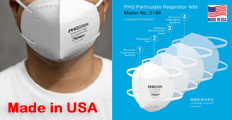



Find all of your laboratory and workplace safety supplies at Safety Emporium!
 LDLo |
 Glossary Index |
 Lethargy |
| MSDS Topics |
Free Sites | FAQ's | Regulations | Glossary | Software | Suppliers |
| Books | Forum | Poll | Fun stuff | Quiz | Store | |
| Understand your MSDS with the MS-Demystifier | Search ALL our MSDS info | |||||
A lesion is bodily tissue which has been structurally changed due to disease or injury and usually occurs as or includes a fissure, wound, or other break in the tissue. Lesions can occur in various parts of the body such as the skin and other organs.
The simplest definition is "a wound or injury".
Skin lesions are abnormal growths or areas of skin that do not resemble the normal skin surrounding them. Examples include cysts, nodules, papules, polyps, pustules, vesicles and wheals. Lesions not caused by injury can potentially be malignant, so always have any unusual lesions assessed by your doctor.

Get your Tyvek protective clothing from Safety Emporium.
Always read and understand the Safety Data Sheets for materials you are working with before using them for the first time. Exposure to corrosive chemicals and irritants can cause skin lesions (wounds), while others can cause lesions, tumors or ulcers on the internal organs on chronic (long-term) exposure.
Section 11 (toxicological information) of the SDS will warn you of symptoms of exposure to the material you are working with. Take steps to minimize your exposure to all chemicals and know the hazards of those that you work with. Be sure to use proper engineering controls such as ventilation or fume hoods if available, and personal protective equipment such as gloves or chemical protective clothing. Specific measures will be found in Section 8 (exposure controls/personal protection) of the SDS.
See also: Dermatitis, edema, erythema, urticaria, vesicant.
Additional definitions from Google and OneLook.
Entry last updated: Tuesday, January 3, 2023. This page is copyright 2000-2025 by ILPI. Unauthorized duplication or posting on other web sites is expressly prohibited. Send suggestions, comments, and new entry desires (include the URL if applicable) to us by email.
Disclaimer: The information contained herein is believed to be true and accurate, however ILPI makes no guarantees concerning the veracity of any statement. Use of any information on this page is at the reader's own risk. ILPI strongly encourages the reader to consult the appropriate local, state and federal agencies concerning the matters discussed herein.